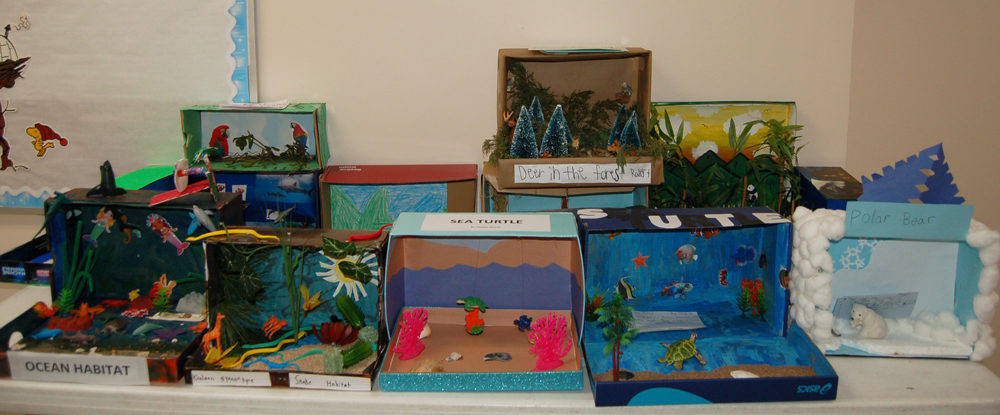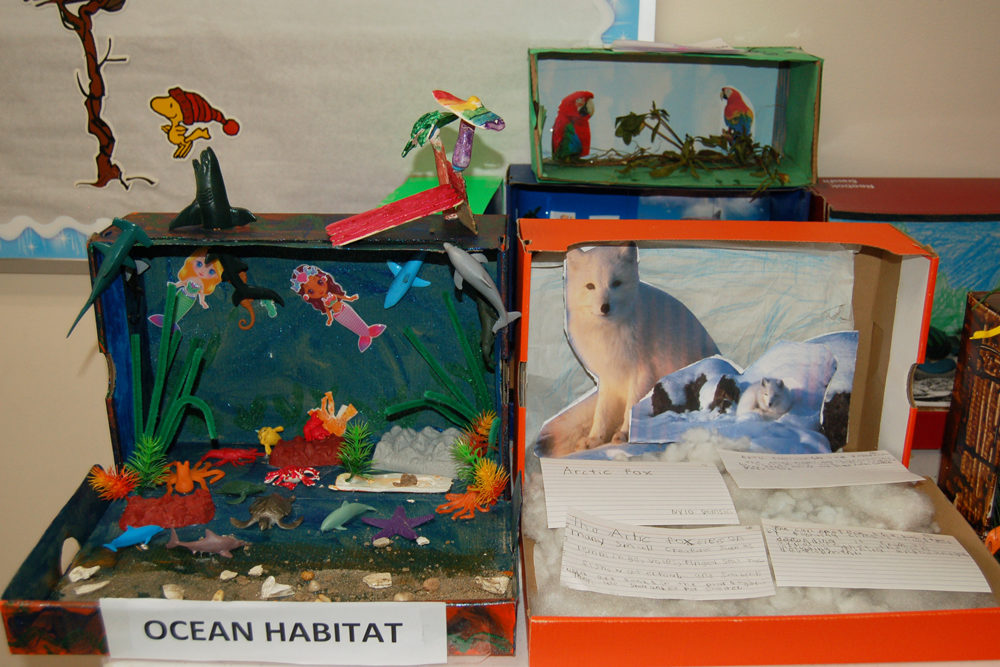 Second grade students selected a favorite book to read in February and then built and decorated three-dimensional dioramas that creatively depict a scene from their chapter book. Some 60 dioramas, made out of shoe boxes or large boxes, were on display during March in an elementary hallway and in a classroom.
Second grade students selected a favorite book to read in February and then built and decorated three-dimensional dioramas that creatively depict a scene from their chapter book. Some 60 dioramas, made out of shoe boxes or large boxes, were on display during March in an elementary hallway and in a classroom.
In addition to the dioramas, the students also had to write a book report and give an oral presentation about their book to their classmates. Some of the books read by students in Mrs. Hockenberry’s 2B class included “Nate the Great and the Stolen Base,” “Space Taxi: Archie Takes Flight,” “Cat Kid Comic Club,” and “The Adventures of a South Pole Pig.”
A sampling of books read by students in Mrs. Brossman’s 2A class and Ms. Leach’s 2C class include: “Dinosaurs Before Dark,” “Dog Man 10: Mothering Heights,” “I Survived the Sinking of the Titanic, 1912,” “Some Pig,” “The World of Emily Windsnap,” “I Survived the Shark Attacks of 1916,” and “Marion’s Got the Butterflies.”
“We want our students to develop a love of reading and learn how to dig deeper into a book to identify the setting, the main characters, and the main events,” said Mrs. Hockenberry. “The students did a really good job creating their dioramas and have learned about a lot of interesting books by hearing the oral presentations and seeing the dioramas their classmates created.”
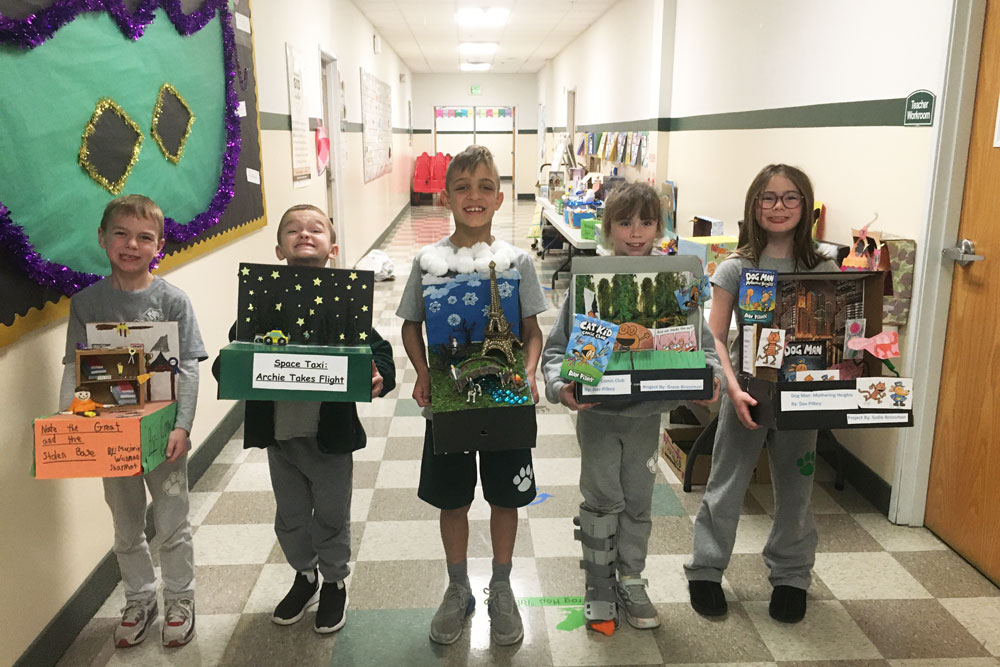

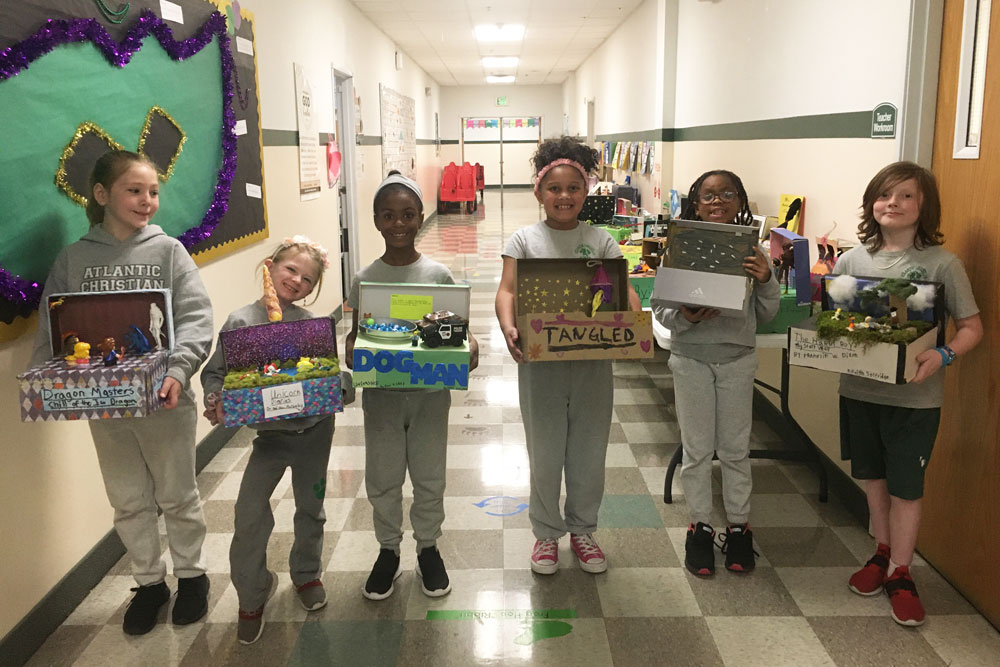
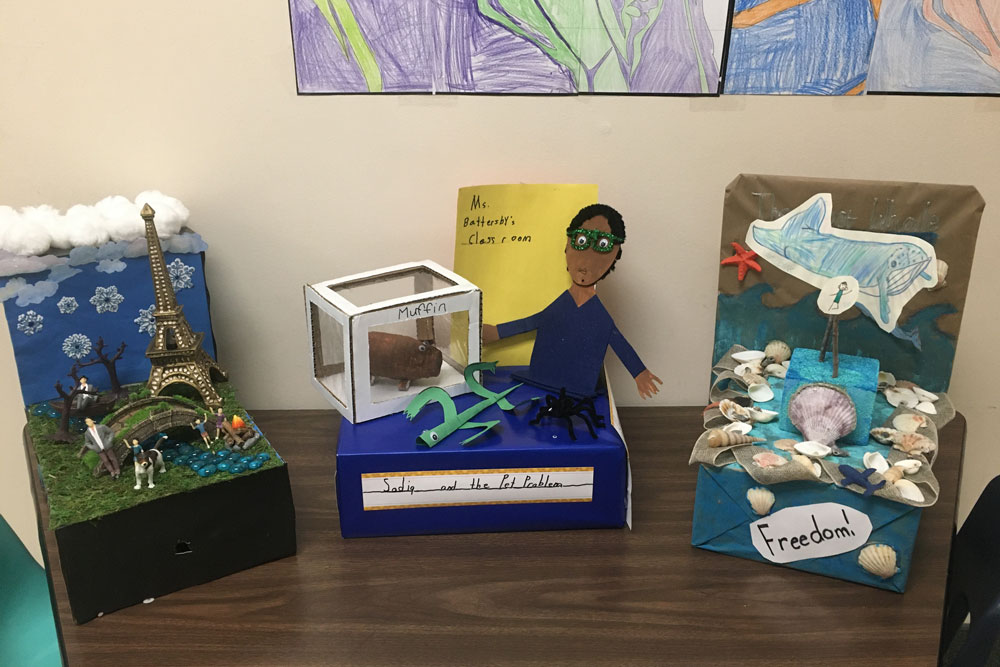
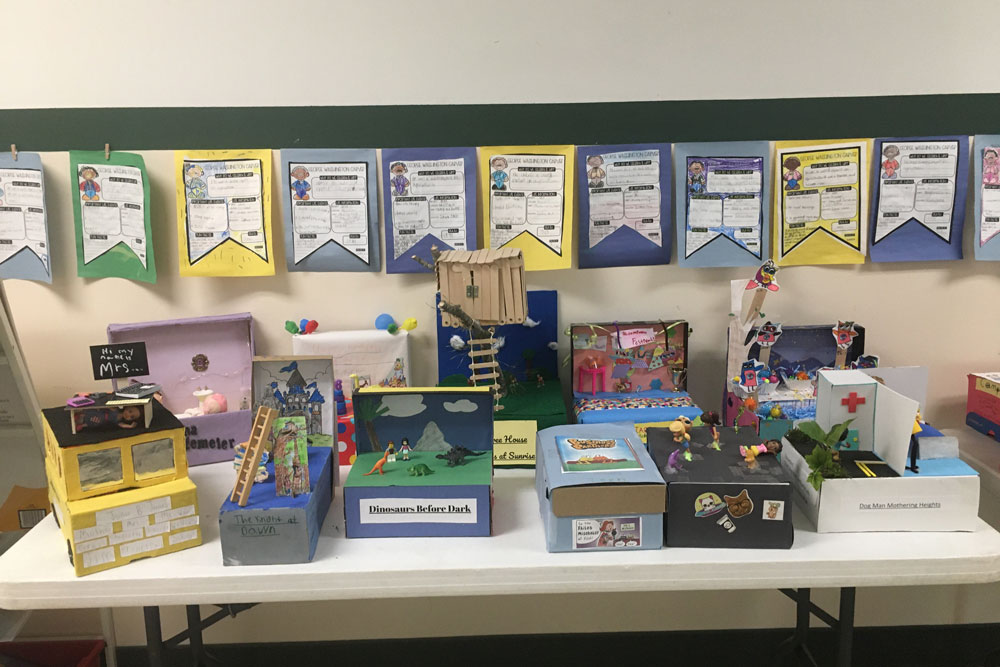
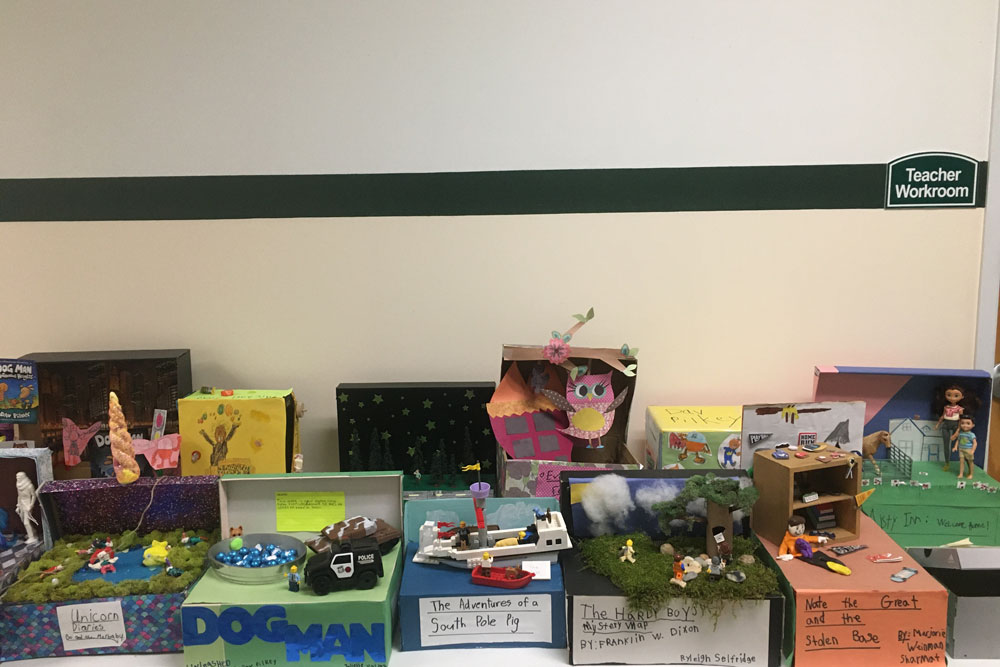
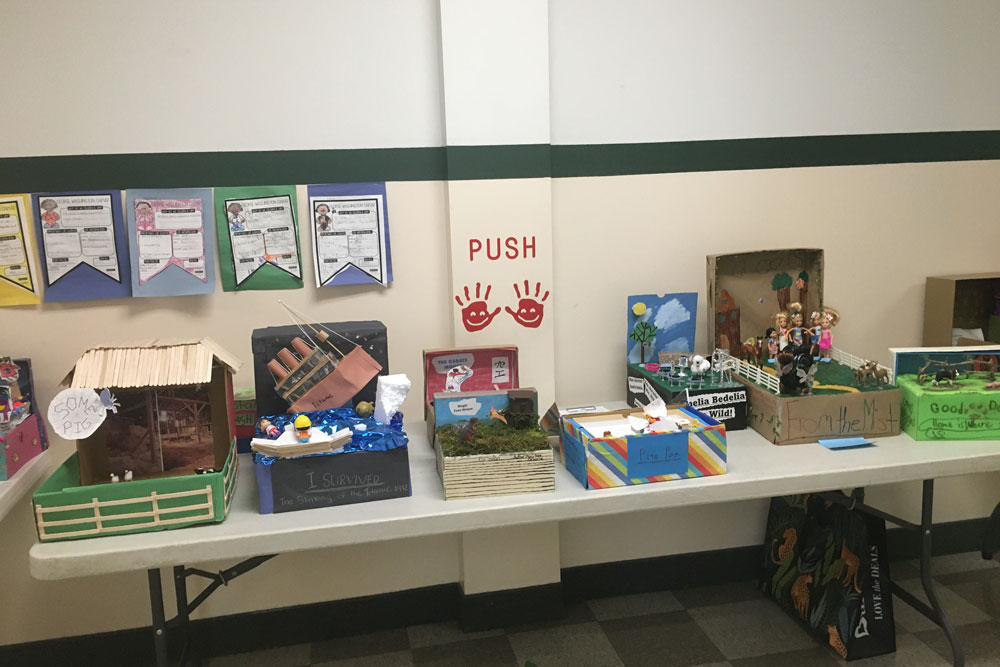
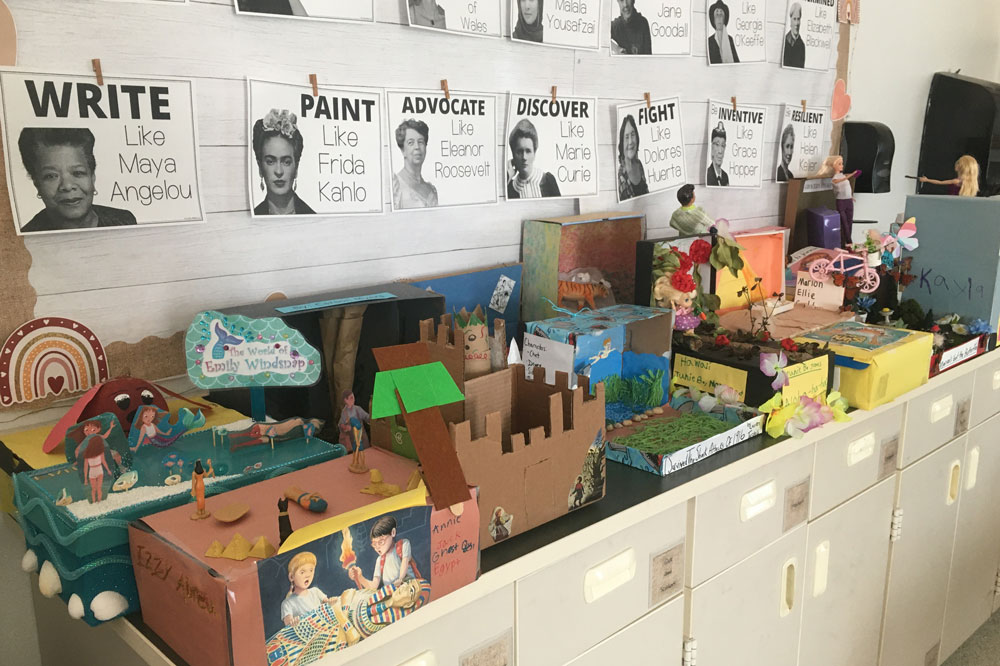
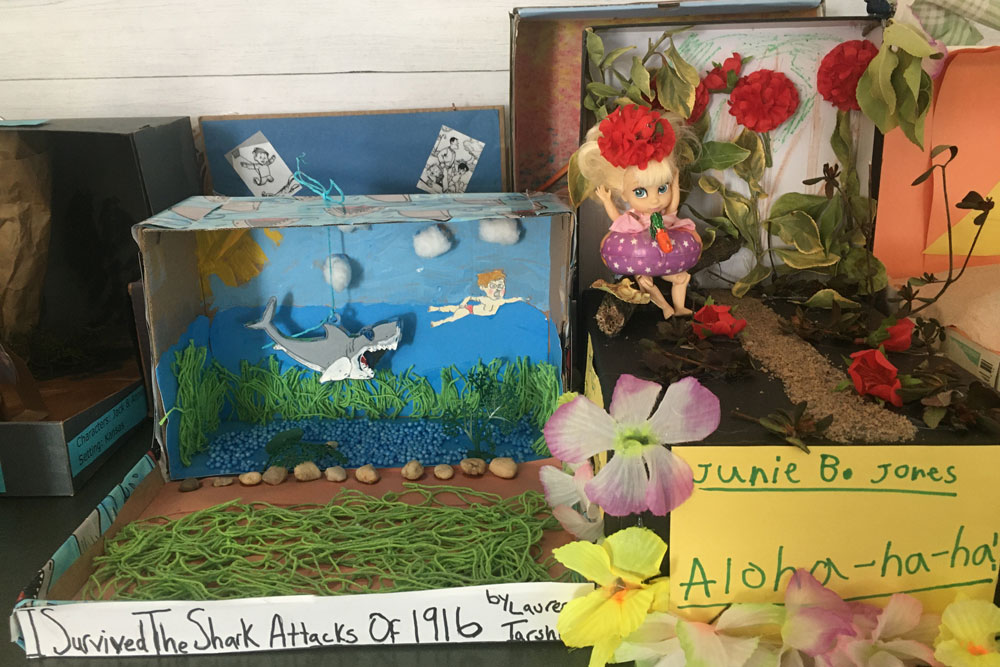

 Students in Mrs. Jackson’s and Mr. Tardif’s 4th grade classes recently built large dioramas depicting the living environments of two people groups in New Jersey in the 1600s – the Lenape Native American tribe and the early European settlers. The dioramas were on display in April on tables in a 1st floor hallway near the school library. History class for students in the 4th grade focuses on the rich history of New Jersey.
Students in Mrs. Jackson’s and Mr. Tardif’s 4th grade classes recently built large dioramas depicting the living environments of two people groups in New Jersey in the 1600s – the Lenape Native American tribe and the early European settlers. The dioramas were on display in April on tables in a 1st floor hallway near the school library. History class for students in the 4th grade focuses on the rich history of New Jersey.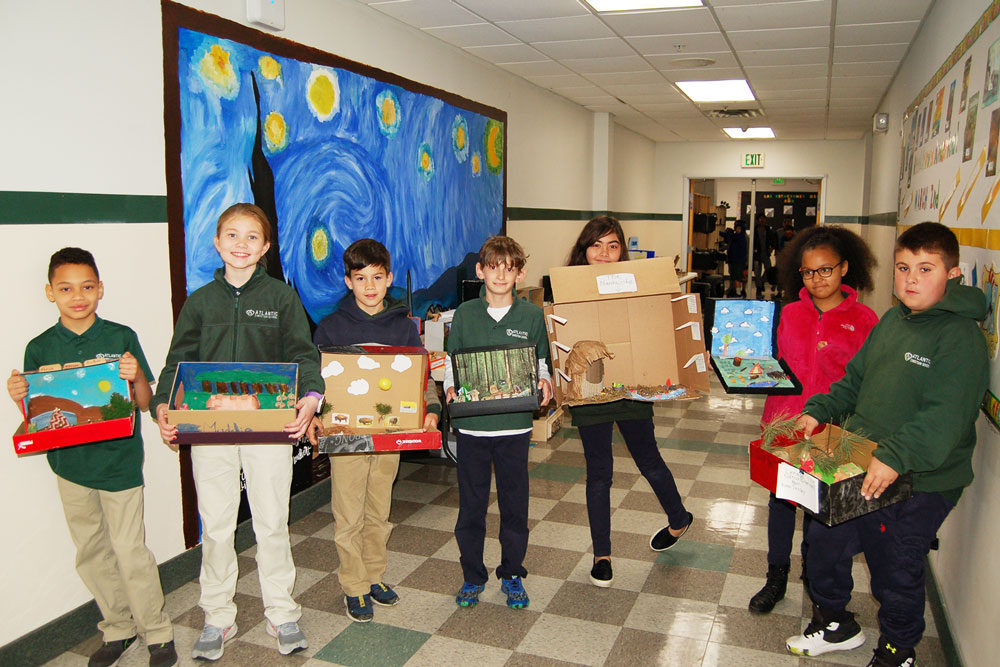



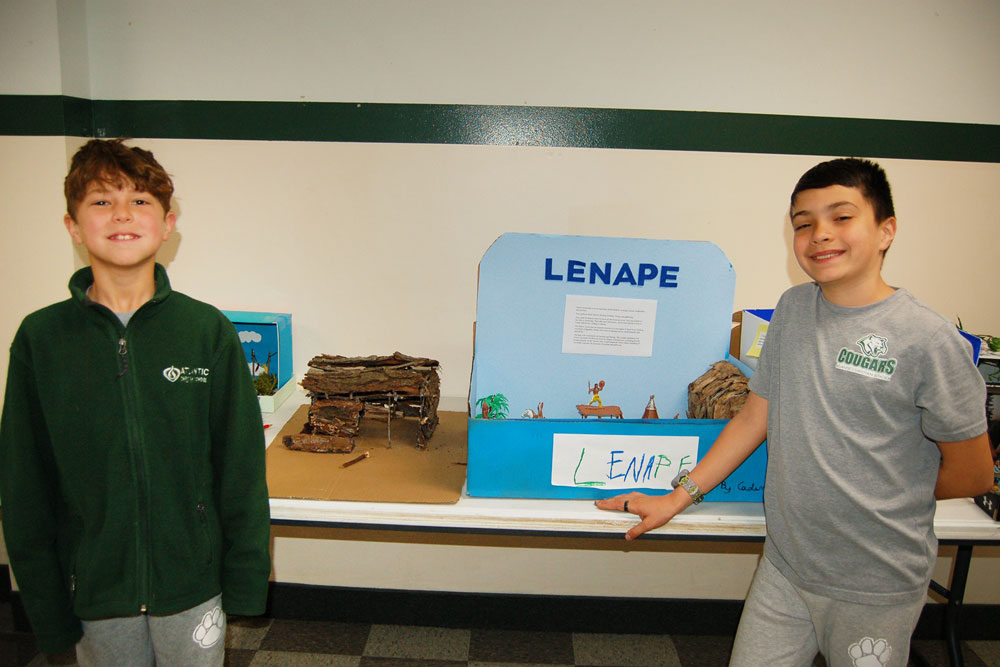

 The students in Amy Williams’ second grade class have been learning about the different habitats that are home to polar bears, snakes, jaguars, parrots, and other animals and recently built creative three-dimensional dioramas as part of a winter science project.
The students in Amy Williams’ second grade class have been learning about the different habitats that are home to polar bears, snakes, jaguars, parrots, and other animals and recently built creative three-dimensional dioramas as part of a winter science project.

